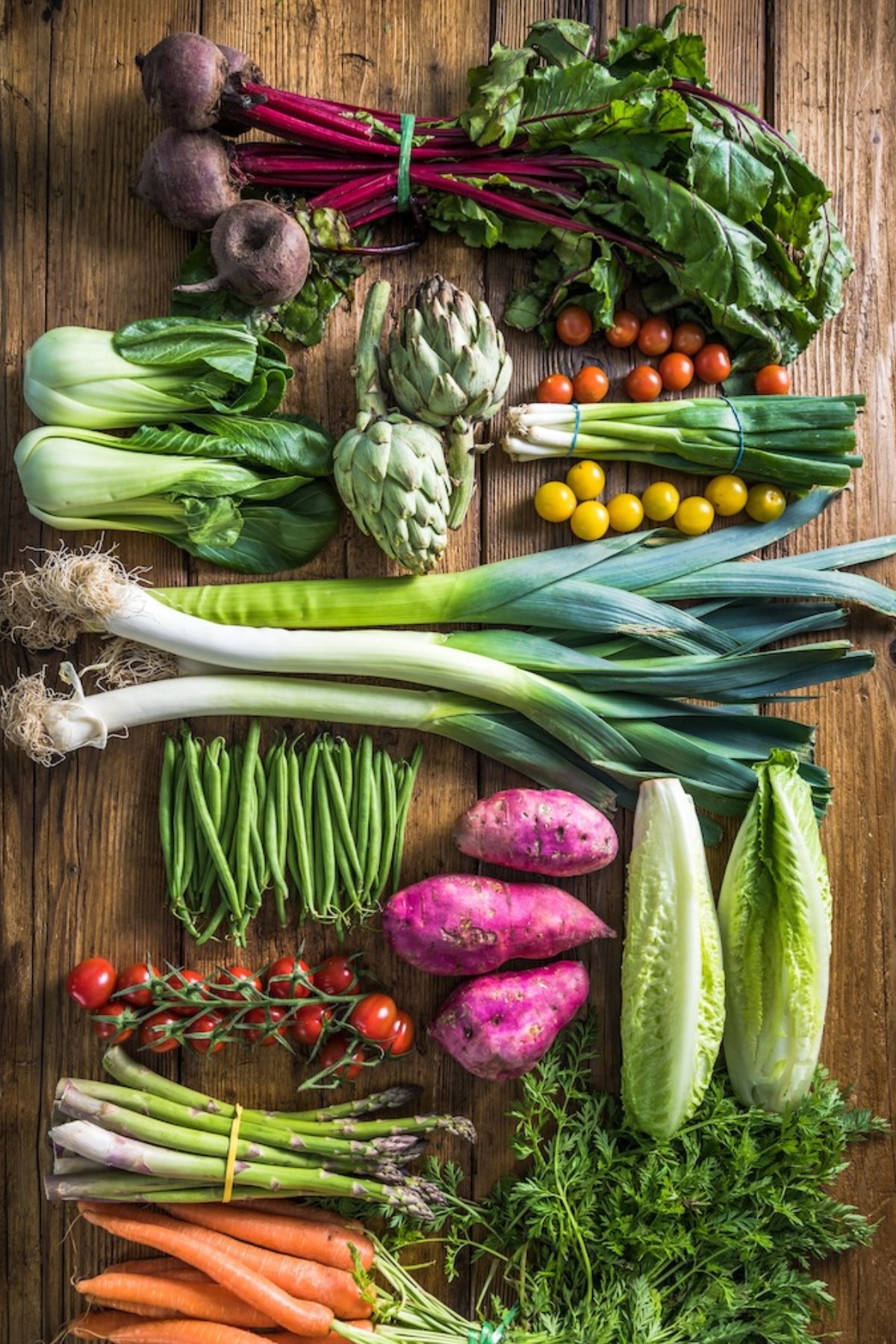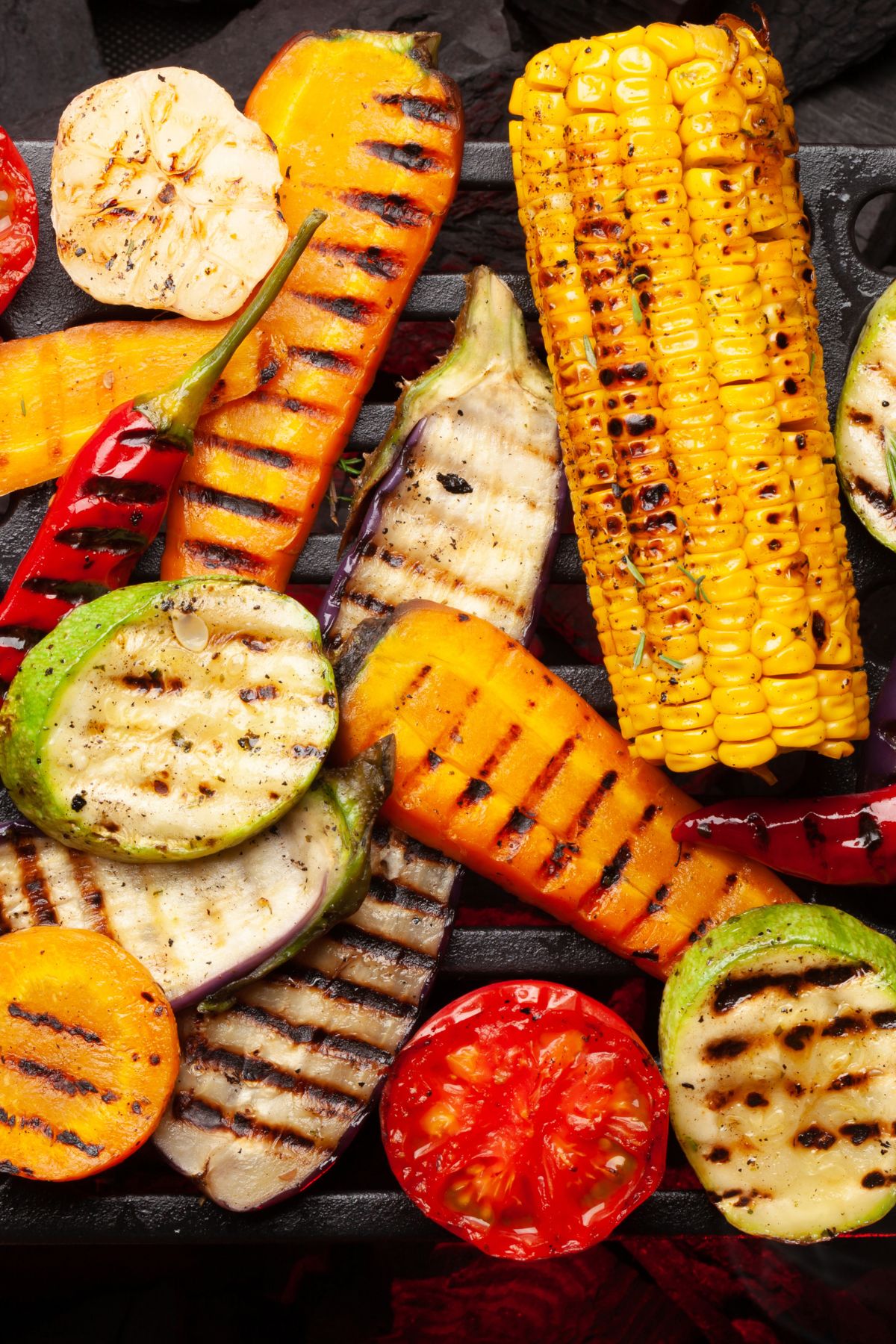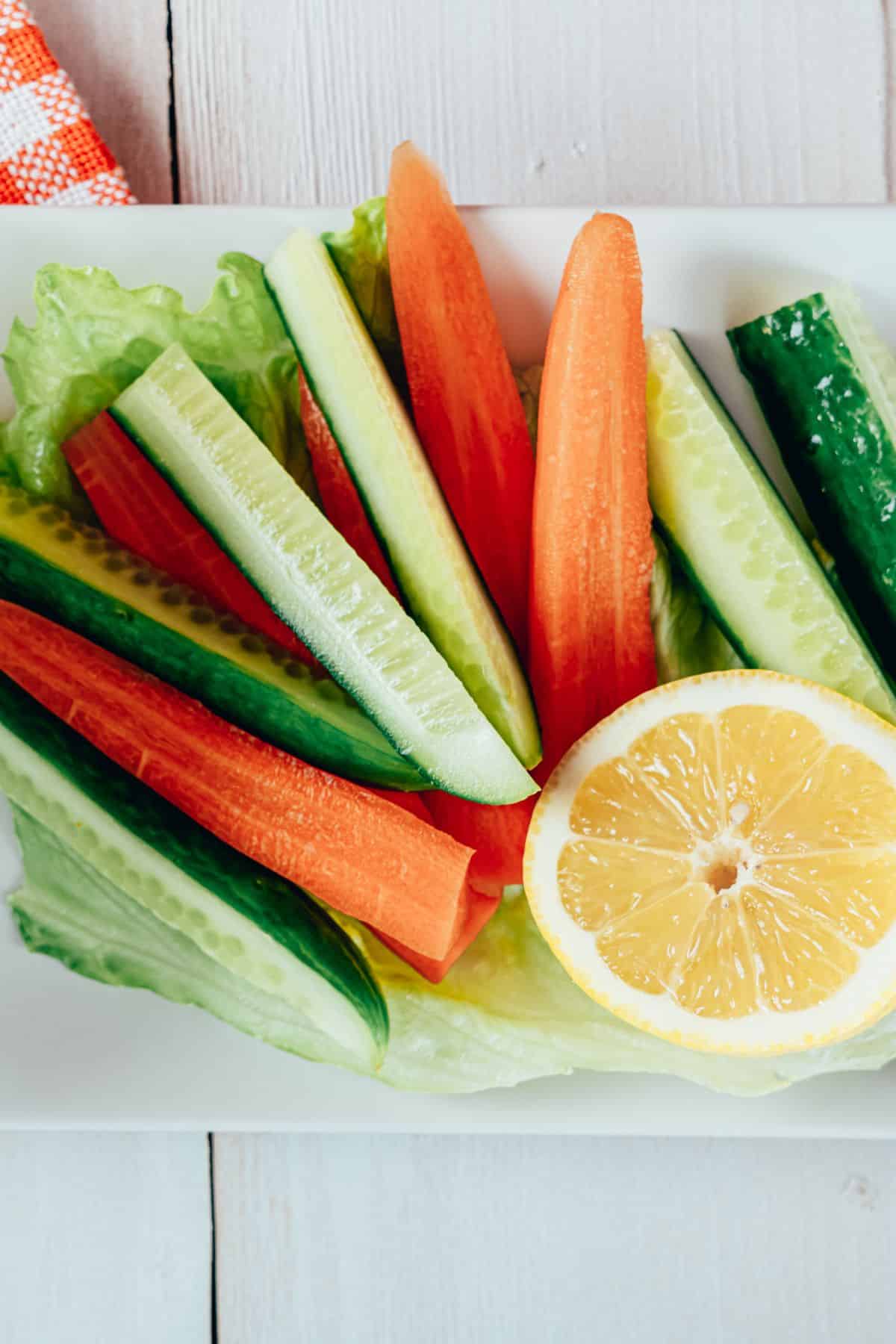7 Tips on How To Make Vegetables Taste Good (I Promise!)
It’s important to enjoy a variety of vegetables on a daily basis for overall health. But, what happens if you don’t like the way vegetables taste? In this article, I share 7 tips for how to make vegetables taste good, even for the pickiest of eaters!

Eating Vegetables is Healthy!
Eating a diverse range of vegetables is really important for maintaining a healthy diet due to their rich content of vitamins, minerals, and dietary fiber. These nutrients are vital for bodily functions, such as maintaining immune system health, aiding digestion, and preventing chronic diseases.
You’ve heard the expression “eat the rainbow.” This means that you should try to eat a variety of colorful veggies as often as possible.
The Dietary Guidelines for Americans recommend that adults consume at least 2-3 cups of vegetables per day for most adults. This variety not only supports physical health but also adds different flavors and textures to meals, making healthy eating more enjoyable.
Each type of vegetable offers a unique combination of nutrients, and by consuming a variety, individuals can ensure they receive a broad spectrum of these essential elements.
The problem is that many people don’t like the taste of vegetables, so they don’t want to eat them. This is understandable! Plain steamed veggies are often bitter or bland. But, the good news is that there are some tips and tricks for making them taste delicious. I promise!
7 Ways to Make Vegetables Taste Good
Here are some simple tips for easy ways to make the boring vegetable taste good.
1. Season your vegetables well
One of the easiest ways to make vegetables taste good is to add some flavor to them. Experiment with different herbs, spices, and seasonings to find the combinations that you like best.
Some classic combinations include garlic and olive oil for sautéed vegetables, or cumin and chili powder for roasted vegetables.
And, don’t be afraid to use salt (unless you are on a low-sodium diet). Salting your cooked vegetables is a great way to pump up the flavor with minimal effort. You can also use flavored salts like garlic salt or citrus salt for extra flavor.
2. Cook vegetables properly
Overcooked vegetables can become mushy and lose their flavor.
To avoid this, be sure to cook your vegetables just until they are tender but still crisp. This will help them retain their texture and flavor.
Remember that most vegetables will continue cooking even after you remove them from a steamer or pot. So, undercook them slightly and then they should be perfectly cooked when you’re ready to enjoy them.
3. Use different cooking methods

Different cooking methods can bring out different flavors in vegetables. For example, roasting vegetables can help to caramelize their natural sugars, while grilling can give them a smoky flavor.
Try different methods to see which ones you like best.
For picky eaters, roasting is often the easiest way to bring out the natural sugars in fresh vegetables such as sweet potatoes, green beans, brussels sprouts, or onions. The high heat used when you roast vegetables is one of the best ways to prepare veggies and satisfy your taste buds, especially for picky eaters.
You can also use the air fryer for new ways to cook your veggies. Add a little oil to help crisp the vegetables.
See more of my healthy eating tips for kids.
4. Pair vegetables with complementary flavors
Certain flavors go well with certain vegetables. For example, butter and parmesan cheese can make broccoli taste great, while citrus can bring out the sweetness in roasted root vegetables.
Experiment with different flavor combinations to find the ones that work best for you.
5. Eat vegetables raw

If you’re not a fan of cooked vegetables, try eating them raw. Many vegetables, such as carrots, bell peppers, and cucumbers, can be enjoyed raw and still taste great.
You can also try making raw vegetable salads or dipping your vegetables in hummus or another flavorful dip. Using a dipping sauce is my favorite way to serve raw veggies. You can also use nut butters, hot sauce, or salad dressing.
For helping picking which veggies to serve raw, see this list of Vegetables for Picky Eaters.
6. Add some fat
Fat can help to round out the flavors of vegetables and make them more satisfying.
Try drizzling olive oil over your vegetables before roasting them, or adding a pat of butter to your sautéed vegetables. You could also use bacon grease to cook your veggies in.
7. Experiment with different vegetables
Finally, don’t be afraid to try new vegetables!
There are so many different types to choose from, each with their own unique flavors and textures. You might be surprised by how much you enjoy a vegetable that you’ve never tried before.
For instance, look in the produce section at the grocery store for veggies like fennel, cruciferous vegetables, and herbs. Chop them up and cook them in a large skillet as a stir fry.
FAQs
To enhance flavor without excess calories, use herbs and spices like garlic, basil, or cumin. A splash of lemon juice or vinegar also adds a burst of flavor with minimal calories.
Try roasting vegetables with a bit of olive oil and a sprinkle of cheese. The roasting brings out a natural sweetness, and the cheese adds a familiar, comforting flavor that many kids enjoy.
Sautéing leafy greens with garlic, onion, and a touch of olive oil softens their texture and mellows out bitterness. Adding a pinch of salt and a squeeze of lemon juice can also enhance their taste significantly.
Season steamed vegetables with fresh herbs, a drizzle of quality olive oil, or a sprinkle of your favorite seasoning blend. These add-ons provide a flavor boost without overpowering the natural taste of the vegetables.
Incorporate a variety of colorful vegetables, and dress the salad with a homemade vinaigrette made from olive oil, vinegar, and a mix of herbs and spices. Adding nuts, seeds, or a sprinkle of cheese can also enhance the overall flavor and texture.
Don’t Miss These Yummy Vegetable Recipes!
Conclusions
Try using these tips to add more flavor to your vegetables. Eating several servings of veggies per day not only boosts health but also adds vibrancy and flavor to everyday meals, promoting a wholesome lifestyle.
Don’t forget to join my newsletter list to get exclusive clean eating recipes and tips. The newsletter is 100% free with no spam; unsubscribe anytime.
About the Author: Carrie Forrest has a master’s degree in public health with a specialty in nutrition and is a certified holistic nutritionist. She is a top wellness and food blogger with over 5 million annual visitors to her site. Carrie has an incredible story of recovery from chronic illness and is passionate about helping other women transform their health. Send her a message through her contact form.
Note: this post is for informational purposes only and is not intended as medical advice. Please consult your healthcare provider for recommendations related to your individual situation.




















